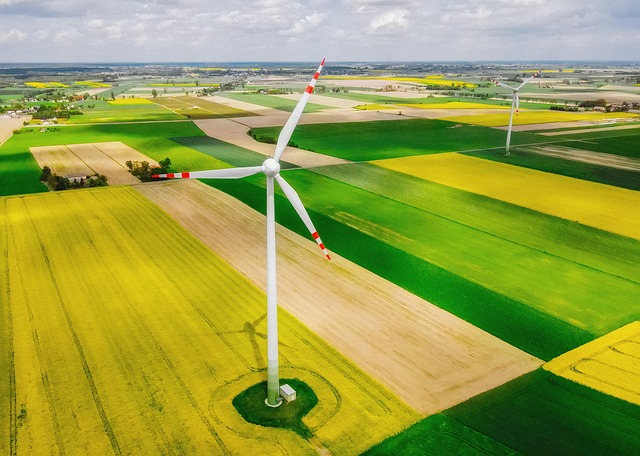
Clean Energy in Urban Spaces: Transforming Cities for Sustainability
As urbanization continues to rise, with over half of the world’s population now living in cities, the need for sustainable practices in urban environments becomes ever more pressing. Cities account for approximately 70% of global carbon emissions, making them critical battlegrounds in the fight against climate change. The transition to clean energy is not only a solution to ecological concerns but also an opportunity to enhance the quality of life for urban residents. In this article, we explore how clean energy solutions are reshaping urban landscapes, promoting sustainability, and contributing to healthier and more resilient communities.
The Importance of Clean Energy in Urban Areas
Urban areas face unique challenges related to energy consumption, including high demand, pollution, and infrastructure limitations. Clean energy, defined as energy derived from renewable sources that have a lower environmental impact, can significantly mitigate these challenges. It includes sources such as solar power, wind energy, hydroelectric power, and geothermal energy. Embracing clean energy in city planning can lead to the following benefits:
- Reduction in Carbon Emissions: Transitioning to clean energy helps significantly reduce greenhouse gas emissions that contribute to climate change.
- Improved Public Health: By reducing reliance on fossil fuels, cities can decrease air and water pollution, leading to improved health outcomes for residents.
- Economic Growth: Clean energy initiatives can create jobs, enhance energy security, and reduce energy costs for consumers.
- Resilience to Climate Change: Renewable energy sources can provide more durable energy solutions that are less susceptible to disruptions caused by climate-related events.
Innovative Clean Energy Solutions for Urban Development
Cities worldwide are leading the way in deploying innovative clean energy solutions. Here, we will delve into some transformative practices and technologies that have emerged as effective strategies for urban sustainability.
Solar Energy Initiatives
Solar energy stands as one of the most accessible and rapidly evolving forms of clean energy. Urban environments can harness solar power in a variety of creative ways:
Cities can facilitate the installation of solar panels on rooftops, transforming building structures into energy generators. Additionally, dedicated solar farms on previously underutilized lands or on the outskirts of urban areas can provide large-scale energy production.
Some cities have pioneered community solar programs, allowing residents to invest in shared solar installations. This approach enhances energy access for disadvantaged populations who may not have the means to install their own solar systems.
Wind Energy Integration
Urban wind energy generation has made significant strides in cities with substantial wind currents. Vertical-axis wind turbines, smaller and more efficient than traditional models, can be installed on rooftops and utilized to supplement energy needs. Larger wind farms positioned near urban centers can also provide clean energy directly to city grids, reinforcing the overall energy mix.
Smart Grids and Energy Storage
The integration of clean energy sources necessitates the evolution of urban energy distribution systems. Smart grids enhance the efficiency and reliability of electricity distribution by using advanced communication technologies. These grids allow for real-time monitoring of energy consumption, enabling consumers to adjust their usage patterns based on price signals.
Furthermore, energy storage solutions, such as batteries or pumped hydro storage, offer a crucial way to balance supply and demand. They allow cities to store excess renewable energy generated during peak production times, making it available during periods of high demand or low production.
Green Transportation Systems
Integrating clean energy into public transportation is essential for reducing emissions and enhancing mobility within urban landscapes. Electric buses, trams, and subways can significantly lower the carbon footprint compared to traditional diesel-powered vehicles.
Moreover, cities can promote electric vehicle (EV) adoption by establishing extensive charging infrastructure, incentivizing individual and shared electric mobility options. Innovations in transportation planning can lead to more walkable cities with robust cycling networks, further reducing dependency on fossil fuels.
Policy and Governance for Clean Energy Transition
The successful shift to clean energy in urban areas requires more than just technology; it demands robust governance, informed policy-making, and community engagement. Urban planners and policymakers play a vital role in driving the clean energy agenda by establishing frameworks that support innovation and collaboration.
Government incentives, such as tax breaks for installing renewable energy technologies or grants for energy-efficient practices, can stimulate growth within clean energy sectors. Collaborative initiatives involving public-private partnerships can lead to the development of sustainable infrastructure projects, further engaging local communities and stakeholders.
Furthermore, creating education and awareness campaigns about clean energy options empowers residents to make informed decisions. Including community feedback in the planning process can help ensure that initiatives reflect local needs and values.
Case Studies of Cities Leading the Clean Energy Charge
Barcelona, Spain
Barcelona has emerged as a model of sustainability, implementing ambitious clean energy measures. The city’s Pla Clima strategy aims to counter climate change by promoting solar energy and reducing reliance on fossil fuels. With innovative policies in place, Barcelona incentivizes solar panel installations on residential buildings, contributing approximately 20% of the city’s electricity by 2025.
Copenhagen, Denmark
Copenhagen set a bold ambition to become the first carbon-neutral capital by 2025. The city has embraced wind power and has transformed its transportation system by promoting cycling and diversifying public transport options with electric buses. With an integrated approach to sustainability, Copenhagen continues to attract global attention for its clean energy initiatives.
San Diego, California
San Diego has made a concerted effort to transition to 100% renewable energy by 2035. The city launched the “100% Renewable Energy Plan,” which encompasses extensive community engagement, leverages solar resources, and promotes energy efficiency. San Diego’s efforts encompass a holistic approach to sustainability, incorporating resilience strategies addressing climate impacts.
Barriers to Clean Energy Adoption
While the benefits of clean energy in urban spaces are myriad, several barriers still hinder its widespread adoption. Among these are financial constraints, technological limitations, and regulatory hurdles. Some municipalities may lack the resources to invest in clean energy infrastructure, while others may encounter opposition from established energy interests resistant to change.
Additionally, existing zoning laws and building codes may not accommodate the implementation of renewable energy technologies, necessitating reforms to promote such innovations. Addressing these barriers through targeted policy interventions, public engagement, and investment in research and development is crucial to unlocking the full potential of clean energy in cities.
The Future of Urban Clean Energy Solutions
As urban populations grow and the urgency of addressing climate change escalates, city leaders and citizens together have a unique opportunity to redefine urban living with clean energy solutions. The future will likely involve integrating smart technologies, further enhancing energy efficiency, and creating holistic designs that prioritize sustainability and livability.
Collaboration across sectors, including government, industry, academia, and civil society, will shape a collective vision for clean energy that transforms urban spaces. As cities become experimentation zones for innovative solutions, they can pave the way to a sustainable future that prioritizes both human and environmental health.
Conclusion
The transition to clean energy in urban spaces is not just a trend; it is an imperative for sustainable living and a necessity to combat climate change effectively. Through innovative solutions, supportive policy frameworks, and community engagement, cities have the potential to lead the way in creating a more sustainable world. As we move forward, urban dwellers and leaders must work together to reimagine their cities, ensuring they are vibrant, equitable, and environmentally sustainable for generations to come.



